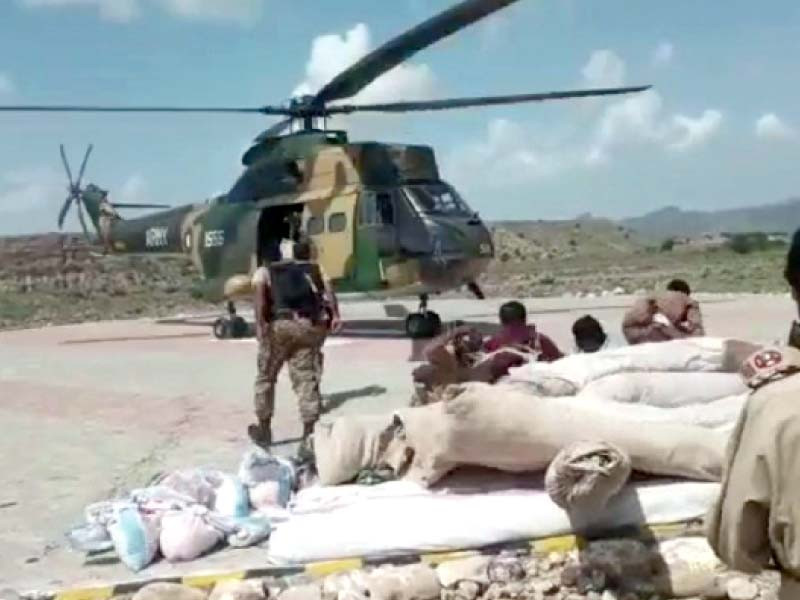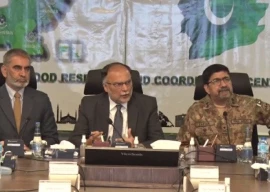
The National Disaster Management Authority (NDMA) on Friday informed a parliamentary committee that saving the fleet involved in flood relief operations from crash was the top priority.
The authority officials were giving answers during the National Assembly Standing Committee on Cabinet Secretariat meeting. Committee chair Kishwer Zehra, alluding to an incident in Balochistan, wondered what the people, who desperately needed assistance, would have gotten when the relief goods were thrown from a great height.
The incident took place earlier this month or late last month when the pilot of a helicopter owned by the government of Balochistan wasted flour bags meant for flood relief by dropping them from a great height.
The provincial government had claimed that the pilot was forced to do so as he could not find a safe spot to land, adding the helicopter was trying to drop relief supplies in the Hanna Urak area, a locality on the outskirts of Quetta.
The NDMA officials, responding to the chair’s queries, said that it was done in an emergency situation, and the helicopter could not have been brought down to a level close to the ground because of a risk of crash.
They said that in order to save the helicopter, the bags were thrown from a great height which resulted in them being wasted.
“The authority maintains a small fleet of helicopters and our first priority is to follow flight safety standards,” the NDMA said.
The NDMA officials also informed the committee that the damage survey for the rehabilitation of flood-damaged infrastructure would be completed by October 15.
The officials, while giving a briefing on the floods, said that according to the 30-year record of rainfall, it rained up to 137mm.
This time it was expected to rain up to 30% more than the average of the monsoon season, but up to 400% more rains occurred in Pakistan, they added.
Sindh recorded an average rainfall of 123.3mm in 30 years, and this year, 160mm of rain was expected in Sindh, but 696mm was recorded, they said, adding that it rained continuously for four to five weeks, due to which the soil's ability to absorb water also ended.
So far, the area affected by rains is about 5.2 million acres, and so far, 720,000 people have been rescued, they told the committee.
NDMA officials said that according to the data till September 28, 1,666 people died, including 615 children. “We are sending a public awareness message to the people that there are no deaths due to roof collapse,” the committee was told.
Around 12,664 people have been injured, including 8,422 injured in Sindh, while 13,073km of roads were affected across the country, particularly the main highways, the NDMA officials said.
Similarly, 410 bridges have been destroyed across the country, 105 small dams have been damaged, and 2 million houses have been affected across the country, they added.
973,000 livestock were affected, and diarrhoea, cholera and rash diseases are spreading now, the officials said, adding that there is a shortage of medicine for fever and malaria.
The issue of the death of five brothers trapped in Kohistan was raised in the committee.
Member of the committee, Muhammad Abu Bakr, while raising the issue, said that five brothers trapped in Kohistan due to the flood were waiting for help, and NDMA could not provide them even one ship. He said that it brought the country into disrepute the world over.
NDMA officials said that there has been large-scale destruction, and restoration of the destroyed infrastructure is a big challenge, they will complete the damage survey by October 15.
Gastroenterology had increased in flood-affected areas, they highlighted.



1732132039-0/Fortnite-(2)1732132039-0-165x106.webp)
1732130824-0/Simon-(2)1732130824-0-165x106.webp)
















COMMENTS
Comments are moderated and generally will be posted if they are on-topic and not abusive.
For more information, please see our Comments FAQ